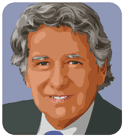The prevailing narrative since Barack Obama’s decisive re-election victory last November is that America is changing. His most reliable voting blocs included progressives, minorities, single women, and youths, and his campaign was supported by an impressive, technologically-inspired ground game. Even many Republican talking heads acknowledged America’s changing demographics in their post-election ruminations.
Canada may be on the verge of experiencing something similar in the coming months and years.
Back in the 1960s, and not long after John F. Kennedy’s presidential victory at the outset of the decade, the Canadian political class was transformed with the rise of a brilliant intellectual from Québec called Pierre Elliot Trudeau, then-leader of Canada’s Liberal Party. Fluent in both French and English, coupled with an impressive life story, Trudeau brought Canadian politics into the new media age. Justin Trudeau, the late Pierre’s son and a current member of parliament representing a district in Québec, is a serious contender for the leadership of the federal Liberals and already seems to be bringing Obama’s style to his leadership campaign. Are we about to have a transformation in how we conduct our politics in Canada?
In recent years, Liberals have fallen on hard times. Once called Canada’s “natural governing party,” Liberals now have a third-party status behind the ruling Conservatives and the official opposition New Democratic Party (NDP). The federal Liberal party will choose its new leader in April in the hopes of reviving its fortunes and once again become the leading progressive voice in Canadian politics.
In the meantime, both the Ontario and Québec Liberal parties will also be welcoming a new leader at the provincial level in the first quarter of this year. Each of these parties has a different reality; the Ontario Liberals are in power in a minority parliament and the Québec Liberals are the opposition party in a minority parliament. Can change in existing Liberal parties translate into change in the country as a whole?
A look at Canadian history shows that Canada has benefited from an orderly transfer of power between moderate conservative parties and moderate progressive parties, the latter usually under a Liberal label. In the past four decades, however, Canada’s political landscape has seen the emergence of more ideologically bent parties. To illustrate, the separatist Parti Québécois has been in office for 18 out of the last 36 years in Québec, and a more populist conservative movement—the incumbent Conservatives under Prime Minister Stephen Harper—has been a dominant force in federal politics since 1993. Liberals in the meantime have become instruments of power rather than advocates of progressive policy initiatives, leaving a greater left-right split in Canadian public discourse.
Canada’s parliament is dominated today by the Conservatives and the NDP, but new leadership among the Liberals could represent change in the political landscape. But it will not be without risks if the electorate across Canada responds better to the clarity of the current left-right continuum.
The Liberals generally tend to be more centrist in their approach. They believe in progressive social programs, which reduce the economic disparities in society and provide a safety net; they are not allergic to government-generated solutions; yet they have argued for fiscal restraint. It is fair to add that Liberals have never been closed to innovation and reforms to the status quo.
With the emerging debate regarding Canada’s First Nations peoples and their demands for reform, a sluggish economy with increasing pressures on the middle class, rising government debt, and the continuing presence of a separatist movement in Québec, Liberals under new leadership across the country could become a part of a changing Canada—and possibly lead the nation. But will there be a strong enough constituency in Canada to support it?





